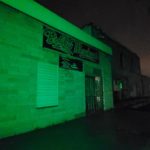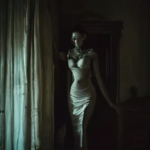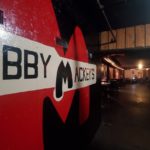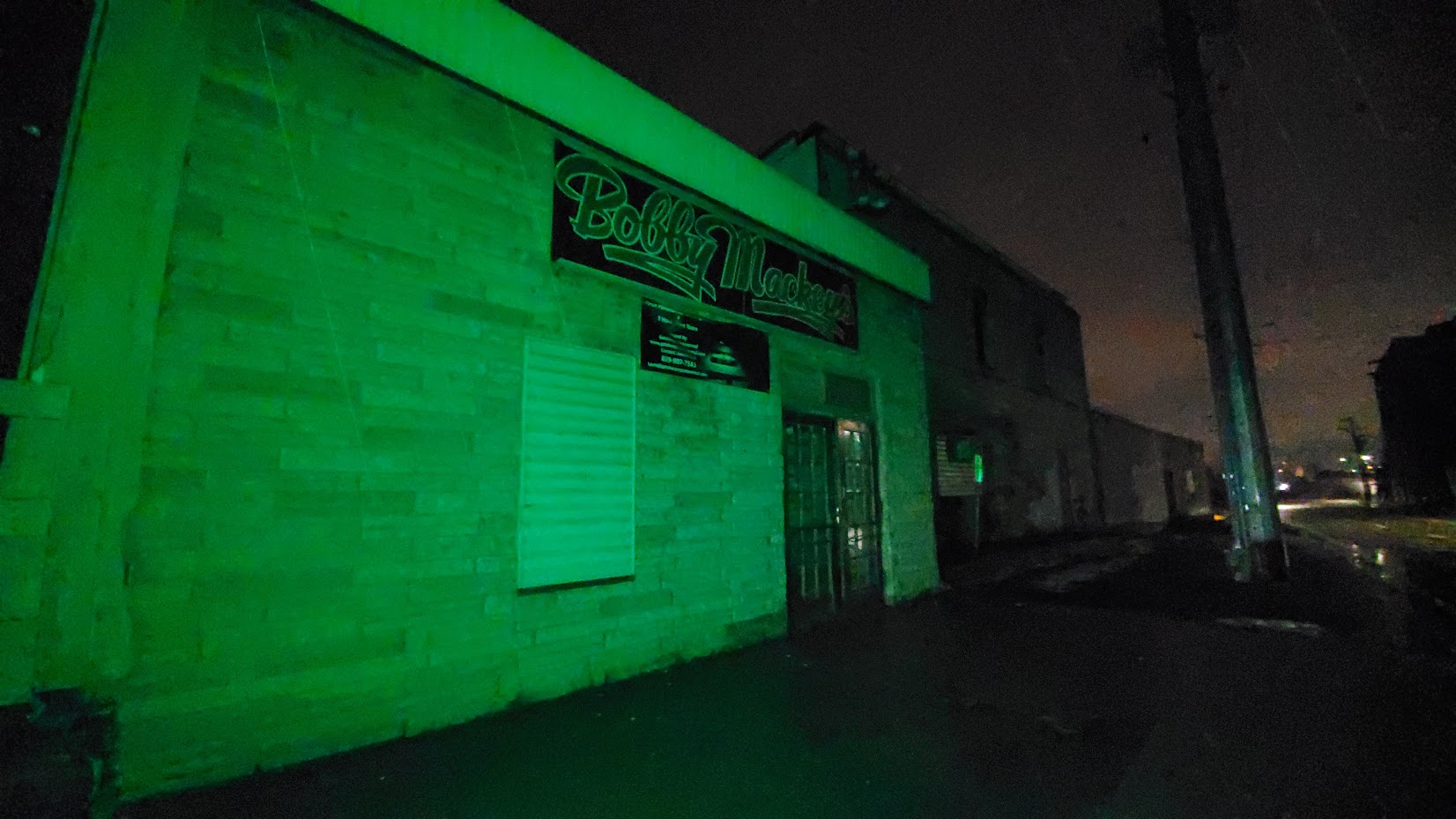Reviewed by Steven Parsons
This is a book that has already received a great deal of criticism and praise in more or less equal amounts on various social media channels. Before it had even been published, let alone read, there were many who felt obliged to comment. Many heaped their praises upon it and hailed its publication, whilst others took well-aimed critical pot-shots at the book and its author Zak Bagans.
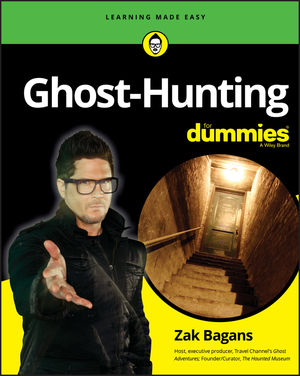
John Wiley & Sons, ISBN: 9781119584759
Publish date:
December, 2019
Bagans is a figure who has become much admired and respected within the ghost hunting community. At the same time he is also the focus for a great deal of criticism and frequent derision by the sceptics and by those who consider themselves to be more ‘serious’ investigators. Bagans rise to fame began in 2007, when his Ghost Adventures pseudo-documentary aired on the SciFi Channel. The following year, his series of the same title aired on the Travel Channel and it continues to the present. Ghost Adventures has become one of the most watched and talked about ghost hunting media shows of the past decade. Now in its nineteenth season, Ghost Adventures and Bagans other media ventures including Paranormal Challenge, Deadly Possessions, and Demon House (see Knibb, 2018) have propelled him into becoming the most well-known and most influential ghost hunter of the modern era.
Whatever one’s personal view of Bagans, there can be little doubt that Ghost-Hunting For Dummies seeks to make sales primarily upon the fame and influence of Bagans, whose name appears on the cover as the author and whose image prominently adorns the book’s cover.
The “For Dummies” series of publications has been in production since 1991. With more than two and half thousand titles that include Hair Loss and Replacement, Psychology and Gardening Basics the series has accumulated sales of over two hundred million (For Dummies) they are a popular series of reference and instructional books. Ghost-Hunting for Dummies retains the traditional format for which the series has become known. Content is divided into four parts, further subdivided into numbered chapters. Part One, The Basics of Ghost-Hunting, which includes chapters considering why people hunt for ghosts; the phenomena of ghost-hunting; the spirit world as entertainment and preparing to look for ghosts. Part Two, Investigating Ghosts and Hauntings, includes chapters about researching, the ghost-hunters toolkit and the danger of ghost-hunting. Part Three, Putting Your Paranormal Research into Action, has chapters relating to using a camera to capture evidence, talking to ghosts, interviewing the haunted and what to do when things go wrong. Finally, Part Four, The Part of Tens, which is common part to each of the ‘For Dummies’ series of books and in this instance, takes the form of a couple of American top ten listings – top ten most haunted places and top ten most haunted towns and cities. The Part of Tens concludes with ten signs that your house is haunted.
A comprehensive guide to the contents makes it easy to access a particular chapter or subject of interest and this is further supported by an extensive index. However, the book has a rather cheap feel, that said, this is not meant to be a high-quality reference book. Bound in a soft cover, the 426 pages and several advertising leaves contribute to the low budget feel of this book. This overall low quality is not helped by the many spelling and other typographical errors that abound – it seems that the budget did not stretch to paying a proofreader. Still, I suppose in this era of print-on-demand and e-books, producing 426 pages for a cover price of $24.99 does require some trimming of the production costs, so perhaps this can be overlooked, after all it is the contents that are important.
From the very start, Bagans states his personal belief in ghosts as a reality and suggests that the same will be true of the book’s readers, which I would wager is probably a fairly safe assumption.
But yet, those of you reading this book believe that ghosts are real. So do I. Like many of you, I have felt them, experienced them, and, in some cases, have had them uncomfortably attached to me in ways that I do not appreciate (p. 7)
Bagans also uses the opening chapter to pour scorn on critical scientists and sceptics, something else I would expect to result in much nodding head agreement from the readers.
Today with new technology assailing us from every side, scientists have once again assured us not to worry – ghosts, haunting, and haunted houses are not real. In this modern era, such things cannot exist. There is nothing out there in the dark. This is what they tell us, but we know differently, don’t we? (p. 8).
This very much sets the tone for the entire book, throughout which, Bagans places his views, opinions and experiences above those of the scientists and the academics. Based upon his experience Bagans offers up his system for investigating hauntings, which he says has worked for him. His system, he writes, will include working with witnesses, dealing with ghost sightings, conducting interviews, finding haunted places, working with spirit communication devices, using equipment, techniques and experiments. He informs the reader that he will be delving into the basics of ghost research and the nature of ghosts themselves. I read on …
Chapter two includes short sections about historical and cultural beliefs relating to ghosts, some notable historic cases and a number of significant figures in the history of ghost hunting, such as Harry Price, Hans Holzer and the Warrens (Ed and Lorraine). Who, together with Sir William Crookes and J.B. Rhine, all receive more than a mere passing mention. It was pleasing to see that both the Ghost Club and the Society for Psychical Research (SPR) being acknowledged, as up to now I did not believe that Bagans had ever heard of either. Bagans certainly rates the SPR highly too:
In 1882, paranormal research took a giant leap forward from séance room to scientific setting when a group of insightful British men, most of them educated at Cambridge University, formed a new association for investigating the paranormal – the Society for Psychical Research, or SPR, as it became to be called. It made its purpose very clear from the start: To examine without prejudice or prepossession and in a scientific spirit those faculties of man, real or supposed, which appear to be inexplicable on any generally recognized hypothesis (p. 52).
I wondered if Eleanor Sidgwick might forgive being overlooked, maybe Bagans could ask her himself on a future episode of his show?
As I read on, my thoughts that perhaps I had wronged Bagans all this time quickly faded, to be replaced by a growing sense of déjà vu. I became more and more sure that I had read several parts of this book before. Bagans’ approach to the subject also seemed at odds with the Bagans I was familiar with from his many television investigations and media interviews. The over-dramatic, self-obsessed and frequently demon-possessed Bagans I thought I knew was here advocating the use of scientific methods and stating that phenomena must be questioned and that rational explanations might exist (pp. 108-109). The more I read, the more the words seemed increasingly familiar. Eventually, I had to check, so I opened up Google and entered a short section by Bagans relating to electronic voice phenomena, which I was reading at that time;
The spirit voices stood out from ordinary radio voices because of their paranormal features, such as the peculiar rhythms and odd speech patterns (p. 255).
I was not too surprised to discover the same sentence, almost verbatim, appearing on page 107 of Talking to the Dead by George Noory and Rosemary Ellen Guiley;
The spirit voices could be distinguished from the ordinary radio voices by their paranormal features, such as peculiar rhythms and speech patterns.
Bagans continued;
They spoke to him directly used his name, offered personal information, and gave him advice on how to improve his recordings (p. 255).
Noory and Guiley also continued;
They spoke directly to him, gave their names, offered personal information and gave advice on his techniques.
Perhaps a remarkable coincidence, or more likely Bagans was working from Noory and Guiley’s book. Neither are mentioned, nor is their book. Nothing in the index relating to either author or their book. It was possible that Bagans had read the book, and was echoing the words – perhaps unintentionally? So, I started putting in more of Bagans’ words and found that the influence of other authors on Bagans’ was more extensive than I had charitably considered. I began to list the numerous instances where Bagans’ words closely or directly echoed that of other authors. This was either a remarkable, even paranormal degree of synchronicity or just plain old plagiarism.
As my list began to grow, I read that another reviewer, Kenneth Biddle (2020) had already published his own comprehensive review of Bagans’ book for Skeptical Inquirer. Reading Biddles’ excellent review will suffice. I really have nothing to add to Biddles’ well-researched and documented account of the plagiarism undertaken by Bagans or by some ghost writer in his name and I would urge people to pause at this point and read that review.
At this point I wondered if it was worthwhile continuing with my own review, listing further examples of plagiarism. I also wondered if the book had any merit, could anything positive be found to say about Bagans’ literary travesty? Actually, there just might be …
Bagans is undoubtedly a popular and influential figure. His fame will no doubt result in sales of this book. This is a book that is intended for the legions of fans, those who emulate and copy what they see on television and in their social media feeds. It is intended for those who now predominate in the modern ghost hunting community, those who probably do not care one jot that their hero has blatantly plagiarised the work of others. A cursory read through the endless comments supporting Bagans and extolling him for this book demonstrates that. They are a community which embraces many beliefs and ideas, an odd blend of the spiritual and the pseudo-scientific. This is the domain of paranormal orbs and of stick-man demons who dance for the game console cameras. It is fuelled by endless chattering and frequently overheated debates by those who hold their differing opinions so dear. They proclaim their love of ‘para-unity’ at regular intervals before blocking and unfriending those who would disagree. This is a community that eschews study in favour of television and social media. They fill their social media comments with pointless questions, endless arguments, astounding evidence and nonsensical claims. They remain entirely ignorant of those who have dedicated their lives to the academic study of paranormal phenomena but nightly gawp at endless live streams of their hero stalking and being stalked by malevolent demons and slavishly copy the methods and the equipment they see portrayed. They do not read books; they do not need to. They do not read about the latest research or a critical review of the methods they see and copy. They do not read about ethics or learn about the generations of investigators who have gone before them and the work that they have produced. So what use is this book to them?
Taken at face value, this book, contains a lot of reasonable information for which the true authors receive no credit or acknowledgement. This is a book that will undoubtedly sell, and perhaps, some of those who buy it, will pick it up and read it. Frustratingly, this is a book which has the potential to influence those who go ghost hunting at weekends. It has the potential to change the way in which they think about ghost hunting and the manner in which they go ghost hunting. It has the potential to improve the way in which they interpret the results of their ghost hunting. All of which are positive outcomes.
This is a book that I feel deeply uncomfortable recommending but despite its many flaws and the very serious issues of plagiarism it might, just might, have the potential to become something that is genuinely helpful for its intended readership. If you, or someone you know, tunes in week after week to watch Bagans’ and the rest of ghost hunting media circus, then this is a book you will probably buy. But if you do buy it then please, take the time to sit down and read it and after you have read it, seek out more books, books by those who are mentioned in Ghost-Hunting for Dummies and the books by the many authors who are not.
Original Article Here for full credits
References
Noory, G., & Guiley, R. E. (2011). Talking to the Dead. New York: Tom Doherty and Associates.
Biddles K. (2020). Ghost Hunting for Dummies by Zak Bagans and many others. Skeptical Inquirer, 44(1)
Knibb, A. (2018). Zak Bagans’ Demon House – Is it a fake?

